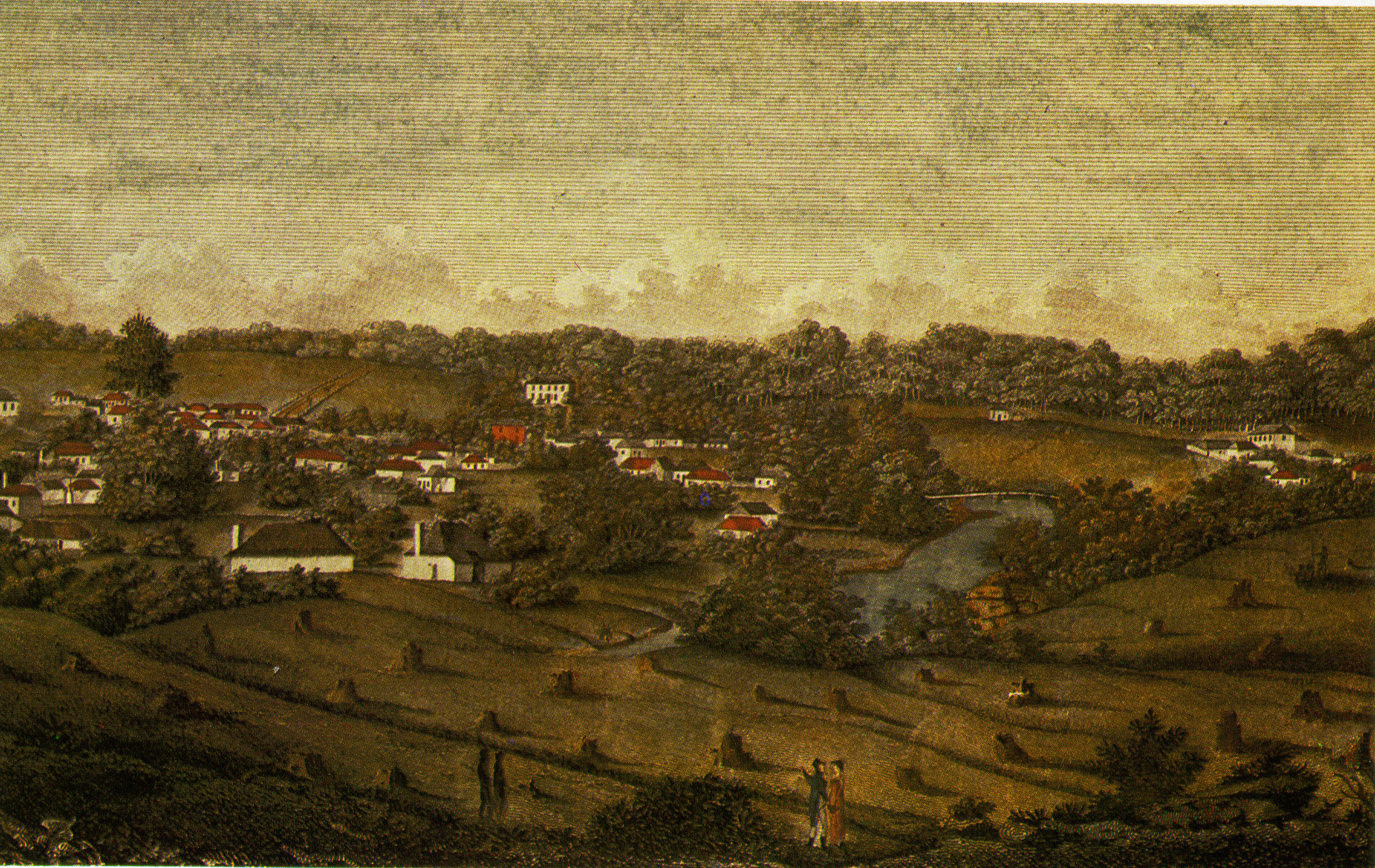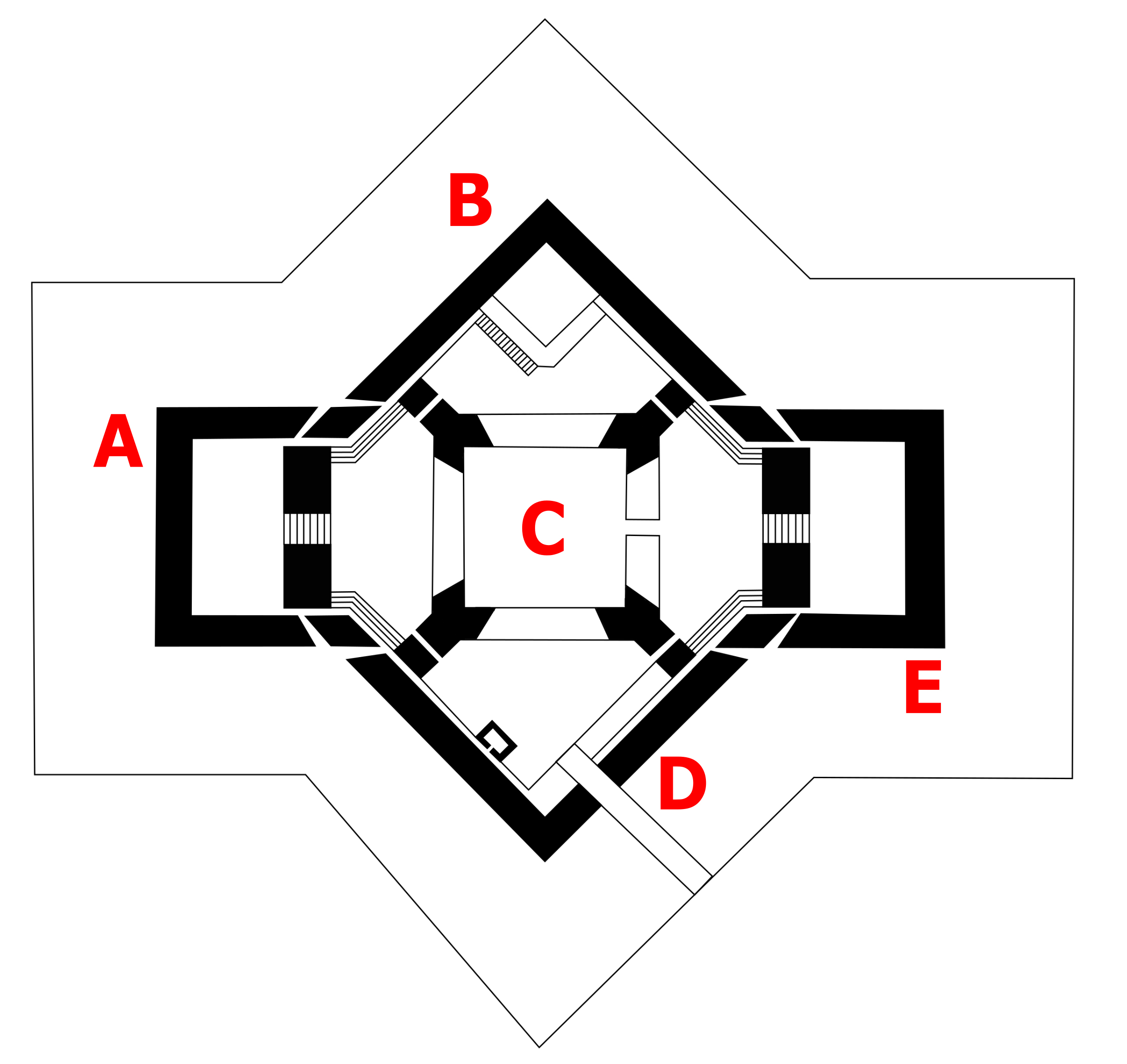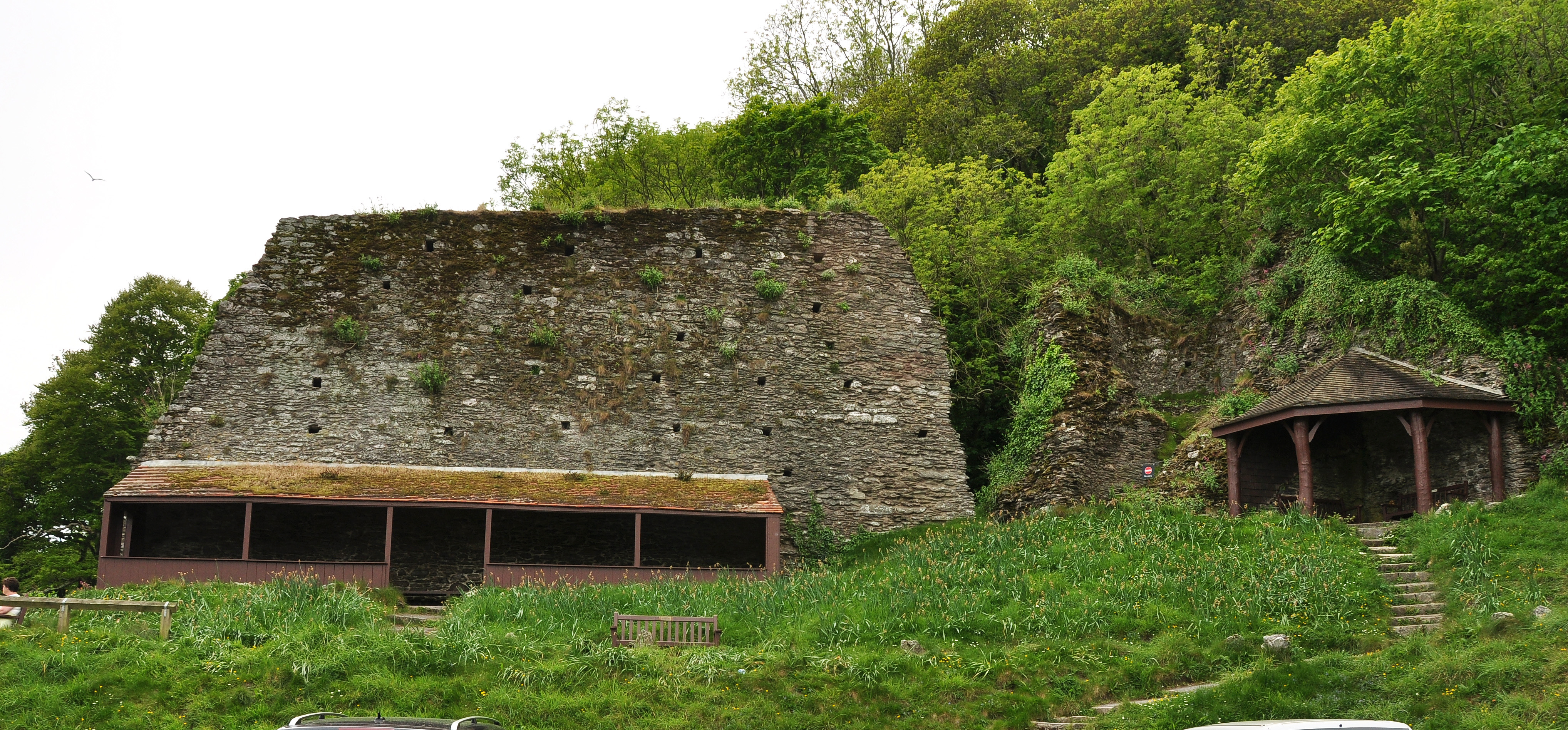|
RML 64-pounder 71 Cwt Gun
The RML 64-pounder 71 cwt guns (converted) were British rifled muzzle-loading guns converted from obsolete smoothbore 8-inch 65 cwt shell guns in the 1860s-1870s."71 cwt" refers to the gun's weight rounded up to differentiate it from other "64-pounder" guns : 1 cwt = 112 pounds. Design When Britain adopted rifled ordnance in the 1860s it still had large stocks of serviceable but now obsolete smoothbore guns. Gun barrels were expensive to manufacture, so the best and most recent models were selected for conversion to rifled guns, for use as second-line ordnance, using a technique designed by William Palliser. The Palliser conversion was based on what was accepted as a sound principle that the strongest material in the barrel construction should be innermost, and hence a new tube of stronger wrought iron was inserted in the old cast iron barrel, rather than attempting to reinforce the old barrel from the outside.Treatise on Construction and Manufacture of Service Ordnance, 1879, ... [...More Info...] [...Related Items...] OR: [Wikipedia] [Google] [Baidu] |
Royal Arsenal
The Royal Arsenal, Woolwich is an establishment on the south bank of the River Thames in Woolwich in south-east London, England, that was used for the manufacture of armaments and ammunition, proofing, and explosives research for the British armed forces. It was originally known as the Woolwich Warren, having begun on land previously used as a domestic warren in the grounds of a Tudor house, Tower Place. Much of the initial history of the site is linked with that of the Office of Ordnance, which purchased the Warren in the late 17th century in order to expand an earlier base at Gun Wharf in Woolwich Dockyard. Over the next two centuries, as operations grew and innovations were pursued, the site expanded massively. At the time of the First World War the Arsenal covered and employed close to 80,000 people. Thereafter its operations were scaled down. It finally closed as a factory in 1967 and the Ministry of Defence moved out in 1994. Today the area, so long a secret enclave ... [...More Info...] [...Related Items...] OR: [Wikipedia] [Google] [Baidu] |
List Of Naval Guns ...
List of Naval Guns by country of origin in decreasing caliber size List of naval guns by caliber size, all countries Naval anti-aircraft guns See also *List of artillery *List of the largest cannon by caliber *Glossary of British ordnance terms References {{reflist External links NAVWEAPS – Naval weapons of the world, 1880 to today(retrieved 2010-02-01) Naval A navy, naval force, or maritime force is the branch of a nation's armed forces principally designated for naval warfare, naval and amphibious warfare; namely, lake-borne, riverine, littoral zone, littoral, or ocean-borne combat operations and ... [...More Info...] [...Related Items...] OR: [Wikipedia] [Google] [Baidu] |
Naval Guns Of The United Kingdom
A navy, naval force, or maritime force is the branch of a nation's armed forces principally designated for naval warfare, naval and amphibious warfare; namely, lake-borne, riverine, littoral zone, littoral, or ocean-borne combat operations and related functions. It includes anything conducted by surface Naval ship, ships, amphibious warfare, amphibious ships, submarines, and seaborne naval aviation, aviation, as well as ancillary support, communications, training, and other fields. The strategic offensive role of a navy is Power projection, projection of force into areas beyond a country's shores (for example, to protect Sea lane, sea-lanes, deter or confront piracy, ferry troops, or attack other navies, ports, or shore installations). The strategic defensive purpose of a navy is to frustrate seaborne projection-of-force by enemies. The strategic task of the navy also may incorporate nuclear deterrence by use of submarine-launched ballistic missiles. Naval operations can be broa ... [...More Info...] [...Related Items...] OR: [Wikipedia] [Google] [Baidu] |
Fort St
A fortification is a military construction or building designed for the defense of territories in warfare, and is also used to establish rule in a region during peacetime. The term is derived from Latin ''fortis'' ("strong") and ''facere'' ("to make"). From very early history to modern times, defensive walls have often been necessary for cities to survive in an ever-changing world of invasion and conquest. Some settlements in the Indus Valley civilization were the first small cities to be fortified. In ancient Greece, large stone walls had been built in Mycenaean Greece, such as the ancient site of Mycenae (famous for the huge stone blocks of its 'cyclopean' walls). A Greek '' phrourion'' was a fortified collection of buildings used as a military garrison, and is the equivalent of the Roman castellum or English fortress. These constructions mainly served the purpose of a watch tower, to guard certain roads, passes, and borders. Though smaller than a real fortress, they a ... [...More Info...] [...Related Items...] OR: [Wikipedia] [Google] [Baidu] |
Waiouru
Waiouru is a small town in the Ruapehu District, in New Zealand's Manawatū-Whanganui region. It is located on the south-eastern North Island Volcanic Plateau, north of Palmerston North and 25 kilometres south-east of Mount Ruapehu. The town had a population of 765 in the 2018 census. The main attraction of Waiouru is the National Army Museum, opened in 1978, which features static displays of New Zealand's military heritage. The rest of the township consists of a small cluster of a police station, two garages, a petrol station/postal agency, a panel beater, two motels, a tavern and half a dozen cafe/restaurants spread along the highway. There are three unmanned diesel refueling sites for the 700+ big freight trucks that pass through Waiouru each day. Nearby are the yards of a roading contractor and a maintenance contractor. A grocery store, hairdresser and beautician are in the Army housing area two kilometres away, and a medical centre, public library, cafe and department s ... [...More Info...] [...Related Items...] OR: [Wikipedia] [Google] [Baidu] |
Army Museum New Zealand
The National Army Museum ( mi, Te Mata Toa) is the museum of the New Zealand Army. It was formerly known as the Queen Elizabeth II Army Memorial Museum.National Army Museum www.armymuseum.co.nz Retrieved 22 March 2009. It is located on State Highway One, on the southern side of the small military town of . The 1300 square metre museum is fortress-looking in design, complete with a bridge and moat. It took the 2nd Field Squadron of the (RNZE) 276 days to build, [...More Info...] [...Related Items...] OR: [Wikipedia] [Google] [Baidu] |
HMNZS Philomel
HMNZS ''Philomel'' is the main administrative naval base of the Royal New Zealand Navy. Originally a training base on board the cruiser it takes its name from, it is part of the Devonport Naval Base in North Shore City, Auckland, New Zealand. History The naval base was founded in 1921 when the New Zealand Division of the Royal Navy was first formed. The old cruiser HMS ''Philomel'', with her engines and armament removed, was moored at the Admiralty reservation, Devonport Dockyard, Auckland, and re-commissioned as a naval training base. HMS ''Philomel'' has been described as the "Cradle of the Navy." In October 1941, on the creation of the Royal New Zealand Navy, HMS ''Philomel'' was recommissioned as the training base HMNZS ''Philomel''. Because of wartime demands for increased training many of her training functions were transferred, along with the ship's main mast, to a new base HMNZS ''Tamaki'' situated at Motuihe Island. Over the years ''Philomel'' sprouted many creative a ... [...More Info...] [...Related Items...] OR: [Wikipedia] [Google] [Baidu] |
Parramatta
Parramatta () is a suburb and major Central business district, commercial centre in Greater Western Sydney, located in the state of New South Wales, Australia. It is located approximately west of the Sydney central business district on the banks of the Parramatta River. Parramatta is the administrative seat of the Local government areas of New South Wales, local government area of the City of Parramatta and is often regarded as the main business district of Greater Western Sydney. Parramatta also has a long history as a second administrative centre in the Sydney metropolitan region, playing host to a number of state government departments as well as state and federal courts. It is often colloquially referred to as "Parra". Parramatta, founded as a British settlement in 1788, the same year as Sydney, is the oldest inland European settlement in Australia and is the economic centre of Greater Western Sydney. Since 2000, government agencies such as the New South Wales Police Force ... [...More Info...] [...Related Items...] OR: [Wikipedia] [Google] [Baidu] |
Southsea Castle
Southsea Castle, historically also known as Chaderton Castle, South Castle and Portsea Castle, is an artillery fort originally constructed by Henry VIII on Portsea Island, Hampshire, in 1544. It formed part of the King's Device programme to protect against invasion from France and the Holy Roman Empire, and defended the Solent and the eastern approach to Portsmouth. The castle had a square central keep, two rectangular gun platforms to the east and west, and two angled bastions to the front and rear, and was an early English example of the ''trace italienne''-style of fortification popular on the Continent. The Cowdray engraving of the Battle of the Solent in 1545 depicted Henry VIII visiting the castle. Despite several serious fires, it remained in service and saw brief action at the start of the English Civil War in 1642 when it was stormed by Parliamentary forces. The castle was expanded in the 1680s by Sir Bernard de Gomme and, after a period of neglect in the 18th cent ... [...More Info...] [...Related Items...] OR: [Wikipedia] [Google] [Baidu] |
Fort Nelson, Hampshire
Fort Nelson, in the civil parish of Boarhunt in the English county of Hampshire, is one of five defensive forts built on the summit of Portsdown Hill in the 1860s, overlooking the important naval base of Portsmouth. It is now part of the Royal Armouries, housing their collection of artillery, and a Grade I Listed Building. Description Fort Nelson is a typical Polygonal or Palmerston Fort. It is six-sided with a deep ditch protected by three caponiers. Above each caponier is a well-protected emplacement for 13-inch mortars. It was originally entered by two Guthrie rolling bridges and has a barrack block for 172 officers and other ranks, protected by a V-shaped redan. A large open parade ground gives access to the magazines 40 feet underneath it. There are open emplacements on the ramparts for 64 pounder rifled muzzle-loading guns and RML 6.6-inch howitzers. There are also three Haxo casemates for 7 inch rifled breech-loaders. The Nelson Monument, which gave the fort its nam ... [...More Info...] [...Related Items...] OR: [Wikipedia] [Google] [Baidu] |
Royal Armouries
The Royal Armouries is the United Kingdom's national collection of arms and armour. Originally an important part of England's military organization, it became the United Kingdom's oldest museum, originally housed in the Tower of London from the 15th century, and one of the oldest museums in the world. It is also one of the oldest and largest collections of arms and armour in the world, comprising the UK's National Collection of Arms and Armour, National Artillery Collection, and National Firearms Collection. Its historic base is in the Tower of London, but today the collection is split across three sites: the Tower, the Royal Armouries Museum in Leeds, and Fort Nelson near Portsmouth From 2004 to 2015, a limited selection of items was also on display in Louisville, Kentucky, in the United States, in cooperation with the Frazier History Museum. History The Royal Armouries is one of the ancient institutions of the Tower of London and was originally engaged in the manufactu ... [...More Info...] [...Related Items...] OR: [Wikipedia] [Google] [Baidu] |
Dartmouth Castle
Dartmouth Castle is an artillery fort, built to protect Dartmouth harbour in Devon, England. The earliest parts of the castle date from the 1380s, when, in response to the threat of a French attack, the civic authorities created a small enclosure castle overlooking the mouth of the Dart estuary. This was intended to engage enemy ships with catapults and possibly early cannon, and incorporated the local chapel of Saint Petroc within its walls. At the end of the 15th century, the castle was expanded with an artillery tower and an iron chain which could be stretched across the harbour to a tower at Godmerock; this addition formed the oldest known purpose-built coast artillery fort in Britain. Further gun batteries were added during the French invasion scare of the 1540s. The castle saw service during the English Civil War of 1642 to 1646, during which its vulnerability to attack from the land became apparent, resulting in the Gallants Bower defensive work above it being used to ... [...More Info...] [...Related Items...] OR: [Wikipedia] [Google] [Baidu] |








.jpg)
